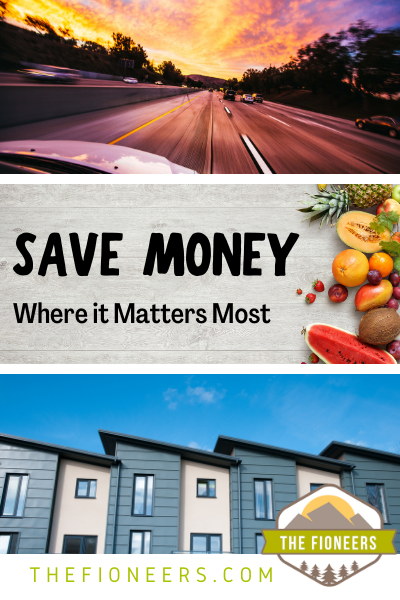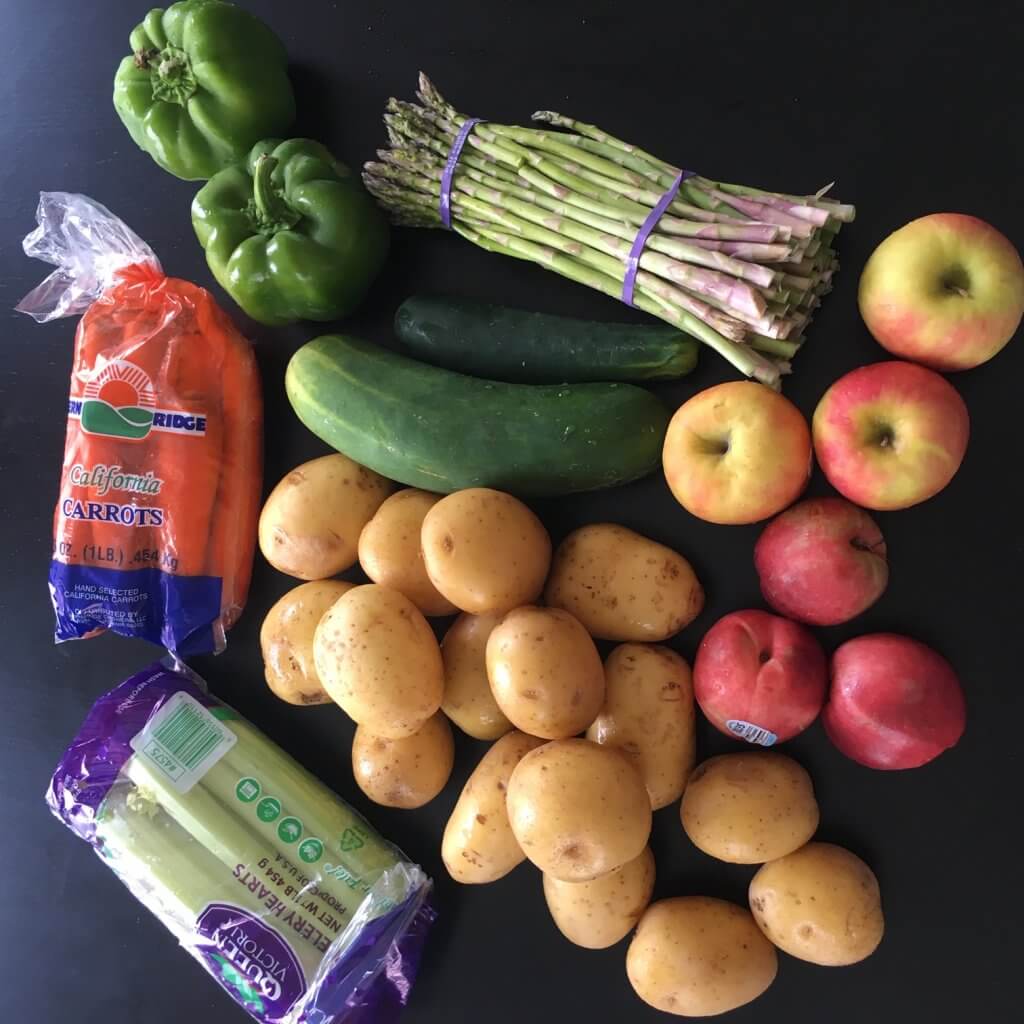
Jess and I are on pace to save about 60% of our after-tax income this year. While growing our income has played a large part in increasing our savings rate (even with intentional decisions to reduce it in recent years), it’s also a result of reducing our spending in three key areas: housing, transportation, and food.
These three expense categories are known as the “big three”, suggesting that they are the largest individual expense categories for US families. Collectively, they make up 62% of the average US household’s spending.
We’ve optimized our spending in each of these three categories, but we haven’t gone too far to an extreme. We don’t live in a tiny home. Some may consider our condo a tiny home when compared to the current average household sizes, but it provides more space than we need.
We own one car that more than covers our transportation needs. We also don’t lack for food. Our fridge, cupboards, and chest-freezer are seemingly always fully stocked.
We lack for naught in these three categories. Somehow, we have resisted the urge to keep up with the Joneses. We’ve found a balance that works for us. This saves us thousands of dollars each year. It has moved us closer to FI – both from a financial standpoint and lifestyle design in buying more freedom.
Here’s a look at our spending compared to the average household’s spending in these three categories.
| Category | Average American (% of Total Spending) | The Fioneers (% of Total Spending) |
|---|---|---|
| Housing | 32.8% | 34% |
| Transportation | 15.9% | 5% |
| Food | 12.9% | 18% |
| Big Three Total | 61.6% | 57% |
Two Reasons to Focus on the Big Three Expense Categories
Prioritizing the big three expenses when pursuing financial independence is important for two primary reasons.
1. The Biggest Savings Potential
First, focusing on these areas gets you the biggest bang for your buck. These three expense categories make up 62% of the average household’s spending. These categories give you the most potential reduction with the least amount of time.
Reducing your big expense categories will give you the most freedom and flexibility. If we had chosen to buy a larger house, it may not have been possible for Jess to work part-time or decide to take the leap to entrepreneurship.
Prioritizing the big expenses also means that we don’t have to sweat the small stuff. Small purchases can add up over time, but they won’t make as big of a difference as managing your largest expenses.
Let me give you an example of how downsizing your home in the Boston area (where we live) could reduce your spending.
Imagine you bought a $750,000 home with 3 bedrooms and 2 bathrooms 3 years ago. At the time of purchasing the home, you put $150,000 down (20%) and signed a 30-year fixed-rate mortgage at 3.75%. This would bring your monthly payment to about $2,800 per month (ignoring taxes and insurance for the sake of simplicity).
You find that you don’t use the third bedroom all that often, but you do love your neighborhood. If you were to downsize to a smaller 2 bedroom condo in the same neighborhood, you could significantly reduce your expenses.
Let’s assume you take the $175,000 of equity that you have in your home (3 years of payments = $25,000 + $150,000 down payment; assuming no appreciation again for simplicity), and buy a smaller condo for $575,000. This means a mortgage of $400,000.
With the same interest rate, your new monthly payment would be $1,850, saving you approximately $950 per month, or $11,400 per year.
This is $11,400 in annual savings from one decision. This will save you $11,400 each year for the next 27 years (with the previous house in this example, the mortgage would be paid off 3 years earlier).
Not everyone will have this same potential for savings. This is just one example of how one change in one of these categories can have a significant impact on your savings.
As a reminder, saving money has a triple effect on your finances. It not only gives you more money now, but it also provides more capital to invest allowing you to grow that money. It decreases the amount you need in investments you need to sustain your lifestyle long-term.
In the example above, it’s not only about $11,400 more savings each year. You can also use that $11,400 to invest (assuming you already have an emergency fund). Also, assuming a 3.5-4% withdrawal rate, it would also mean that you’d need $285,000-326,000 less to reach full financial independence.
Housing is one example of the big three. Similar results can come from transportation or food, depending on your household spending. I recommend you consider all three when making big changes.
It’s common for households to move from urban to suburban regions to reduce their housing costs. This is a very popular approach. According to Pew Social Trends, 55% of Americans live in the suburbs.
I understand why. It allows families to have a little bit more space without paying more; or better yet, with paying less.
The housing example above was one of downsizing, but you can also move to reduce your housing expenses. The only problem with the latter is that you will most likely increase transportation expenses.
87.8% of the average household transportation expenses are associated with a personal vehicle. Moving to the suburbs increases your reliance on vehicles, and increases the odds that you own two depreciating assets (for a two-adult household) instead of one.
Regardless of your strategy, it makes sense to start here because of the potential for savings.
2. Seek Balance By Prioritizing Your Focus on Savings
The second reason to focus on these three big expense categories is that it helps you find and maintain a balanced lifestyle. When you prioritize the biggest three categories, you can use your mental energy to focus on other pursuits.
The journey to financial independence can be obsessive and addictive. I know from personal experience. When I first learned of financial independence, it felt like nothing that I was doing was enough.
I kept looking for new ways to save money and optimize our lifestyle. I always wanted to save more. I spent all my free time reading about personal finance.
“What if we save 5% more this year?”
This was the question I would ask myself every year. I knew that if we saved 5% more it would mean that we are buying more freedom.
Over time, each new action had a smaller return. I had already optimized the big things. I ended up focusing a lot of my time and energy on things that didn’t move the needle for us.
I’ve seen many others follow the same path. It is easy to lose sight of the end goal when pursuing financial independence. It’s easy to get so caught up in the strategies of reaching financial independence that you forget why you are so motivated to reach FI in the first place.
I didn’t know then what I know now. I didn’t appreciate the value of taking a more-intentional slower path to financial independence. I didn’t value enjoying the journey along the way. This was and continues to be the impetus for Slow FI.
You can choose to use all your mental energy trying to reach FI as quickly as possible. This will likely result in discovering many new techniques and strategies to optimize your life, a high savings rate, and a short journey to FI.
The trade-off is that you don’t get to spend that time and energy to create the life you want after reaching financial independence. If you focus solely on how to achieve your financial goals, you won’t know what to do with your freedom once you get there.
Focusing on the big three expense categories when trying to reduce your spending makes it more manageable. Instead of trying to optimize every aspect of your life, try starting with these three big categories.
As a result, it will provide you more mental space to discover your passions and the life that you are moving toward.
How to Reduce Your Household Expenses
Saving money on housing, transportation, and food continues to be a big part of our journey to financial independence. Everyone’s situation is unique. There is not a one-size-fits-all approach to any of these expense categories.
With that said, we’ve tried to provide a framework for each expense category to help you think through your options.
Housing
Housing makes up about 1/3 of the average household’s spending. This makes it the place to start when looking for ways to save money.


We’ve kept our housing expenses lower by buying a condo with just enough space for us. Our 1,000 square foot condo is more than enough space for two. We also have plenty of storage space in the unfinished basement for all our outdoor hobbies. Because it’s a condo and a self-managed HOA, we share the costs and upkeep with the other members of the HOA.
As we said, everyone is different. Our strategy won’t be right for everyone.
There are three big questions as part of a self-discovery tool to identify opportunities to save money on housing (and to determine how it fits into your ideal lifestyle). These three are:
- In which state/region should I live?
- Urban, Suburbs, or Rural?
- How much (indoor) space do you need?
There are many layers to each of these questions. To support this self-discovery tool, each one of these questions has accompanying items to consider. Click through to our full article on reducing housing expenses to review this for yourself.
Transportation
Transportation on average makes up 15.9% of the average household spending. While there may not be as much potential for saving money, there is plenty of opportunities. One-fifth of US households spend less than $4,000 on transportation. The average American household spends more than double that.
Saving money on transportation is a bit more straight-forward. A majority of transportation expenses relate to personal vehicles. With that said, it does require a couple of key mental shifts to be able to save money on transportation.
We’ve kept our transportation expenses low by prioritizing proximity to work and downtown Boston. We may pay a little bit more per square foot for our housing. But we more than make up for it with less reliance on personal vehicles.
We own one car, which we buy used and keep for a long period of time. The one car is a luxury in a city, but it makes it easy to get around on the weekends and get outside the city.
Food
Food-related spending makes up 12.9% of the average household spending. This is one of the areas that Jess and I have focused on the most. Because we’ve optimized the other areas already, this is where we have the most potential for savings.
There are a few techniques that have worked well for us.
1. Focus on Cost Per Person Per Meal
For about 6 weeks, we tracked the food we ate and calculated the cost per meal. This was incredibly eye-opening for us and helped us to see what items from which grocery stores cost the most.
Being this intentional was a game-changer for us. It allowed us to think about spending money on food differently. I encourage you to learn more about our food challenge.
2. Buy Food in Bulk
Buying in bulk is a similar strategy in that it allows us to save about $2,000 per year without clipping coupons. Read more about our guide to buying in bulk.


3. Ugly Produce Delivery
We also made the switch to using Imperfect Foods for our ugly produce delivery. This has reduced our spending on fruits and vegetables. It was also so critical to get food during COVID-19 lockdowns.
Saving Money is About Buying Freedom
Focusing on the big three has allowed us to save money and move closer to our ideal life. Saving money is great in that it provides us freedom in the future, but also in the present. Jess recently decided to quit her day job. Part of the reason we are able to make these decisions to shift our lifestyle is because we have optimized our spending.
Saving more money isn’t just about expediting your journey to FI, but enhancing it. It can provide you the opportunity to buy more freedom now by designing your life. The big three can help you accomplish that without going too far to the extreme.
Readers, how have you optimized your spending in the big three expense categories?

























This should be required reading for anyone who was told that they need to cut out their morning latte or avocado toast in order to become FI!
Love your thorough and concise writing style.
And I’m always a big fan of FI-ers that manage to pursue their goals without going too extreme.
Hi Kane,
Thank you for your comment. Yes, we definitely don’t always cut out the latte (although I am allergic to Avocado toast, so none of that for me). However, one important thing we’ve focused on regarding our food spending is cooking food at home. It’s amazing how much cheaper it is. However, doing this most of the time, allows us to splurge every once in a while and especially when we are out with friends!
Best,
Jessica
Great job guys. I like your % chart. I should figure out what our percentages are.
Our housing is very low because we live in a duplex and rent one unit out. Sharing housing helps lower the cost a lot.
Although, it seems like figuring out the % of total income would work better. Our total expense is pretty low.
Hi Joe,
Thanks for reaching out! Interesting, yes we could take a look at housing as a % of total income rather than just our total expenses, that would be a great idea.
So great that you have a house hack! I’m sure that helps a lot. That’s not something we’re able to do easily here in Boston since real estate is so expensive.
Best,
Jess
Hey Jessica, I loved browsing this post. I never thought about calculating cost per meal, this can really help in cutting down grocery shopping. Thanks for sharing these amazing tips to save money on household expenses. Keep Up!
Hi Ella,
Thank you for the comment! That was a super helpful strategy for us!
Best,
Jessica
I love this. The big three are eating up so much of peoples’ budgets, and it’s nice to see a real example of how to get it under control. It doesn’t matter how much you pull back your personal spending if you’ve already spent nearly all of your income on housing, transportation, and food!
Great article!
Your savings rate is simply incredible. We have too much house for our family in hindsight. There are rooms we never use except when family is over. We can pretty downsize and save more.
One of our biggest expenses is private school tuition and before and after care. Our 2 boys were in public school until Covid hit. Then the public schools shut down and we enrolled them in private. Now that we got the experience of a private religious school, there is no going back to public school. Too bad that is takes a huge part of our budget. And it’s not going to get any better as they age.